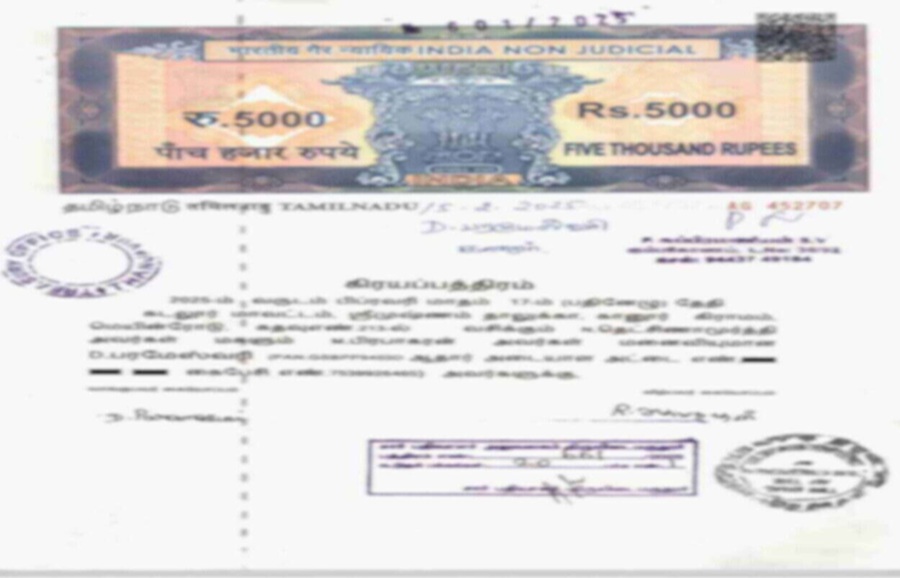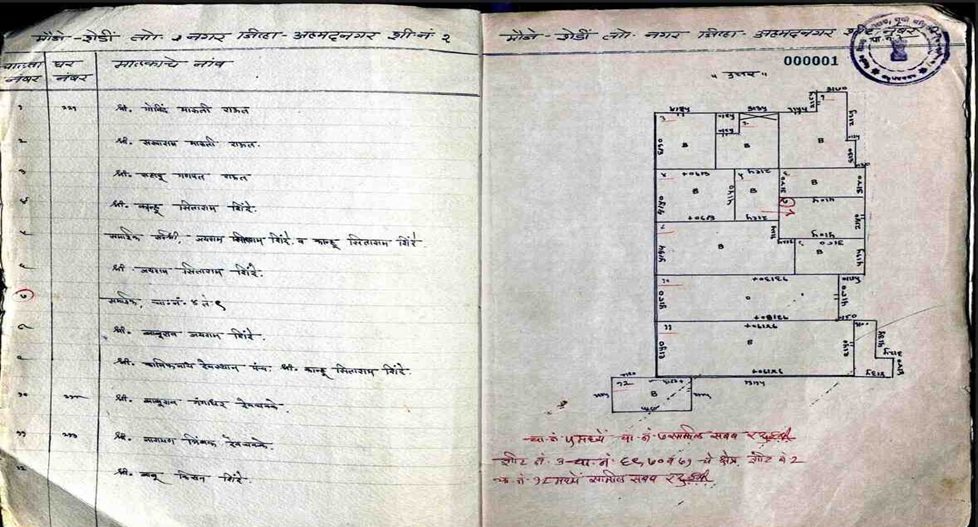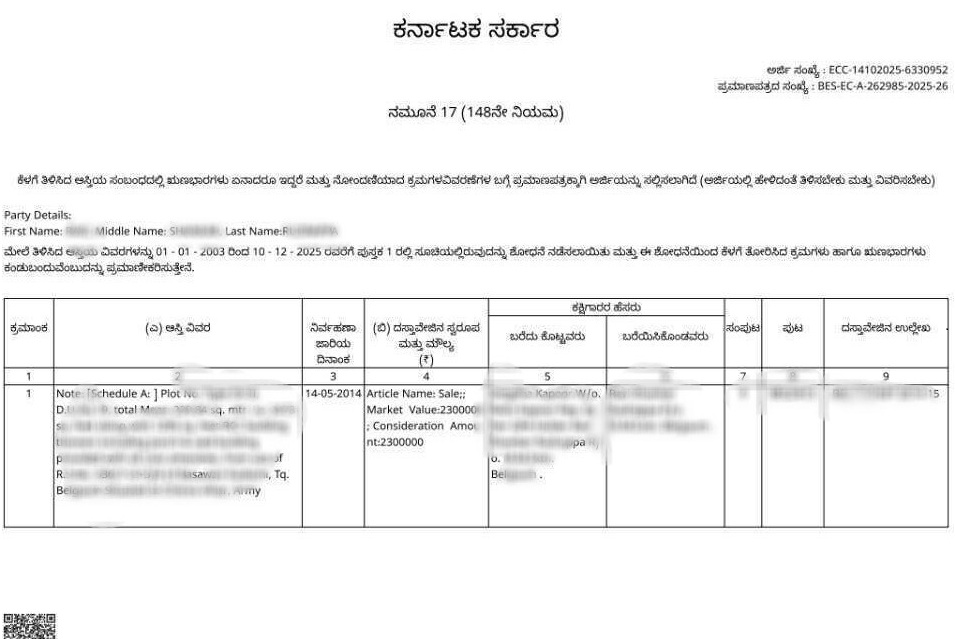What is Certified Adangal?
In Andhra Pradesh, an Adangal (also called a village account or Pahani) is the official land record for agricultural plots. It is maintained at the Mandal (sub-district) level by revenue officers and lists each plot’s owner and farming details. A Certified Adangal or Meebhoomi Adangal is digitally signed copy of this record.
Why is Certified Adangal or Meebhoomi Adangal important?
Certified Adangal or Meebhoomi Adangal brings transparency and legal clarity to rural land dealings. As a government record, it verifies who actually owns and cultivates the land. Adangal usually contains details of land such as owner’s details, area, assessment, water rate, soil type, nature of possession, liabilities, tenancy and crops grown. In other words, it answers questions like “Whose land is this, how big is it, and what is being grown.” This makes Adangal crucial for many stakeholders:
- Property Buyers and Sellers: Before buying farmland, a buyer can check the Adangal to confirm the current owner, the exact area, and current crop usage. Adangal can thus be used to sell and purchase a property, as it specifies all the land-related details. Having a certified copy ensures these details are accurate and government-backed.
- Farmers and Landowners: With soil and water information on record, Adangal helps farmers plan cultivation and irrigation. It shows land classification (wetland vs. dry land) and water sources, which is useful for agricultural planning and applying for government farming schemes. A certified copy can also be required when applying for land-related subsidies or relief, since it is an approved official document.
- Legal and Administrative Clarity: For legal disputes or loans, the Adangal serves as a supporting document. Banks and courts often rely on the ROR (Record of Rights) 1-B for title verification, but Adangal helps corroborate the land’s status and usage. In disputes over land boundaries or inheritance, having a digitally signed Adangal copy can speed up resolution by providing clear, official facts.
How to Obtain a Certified Adangal or Meebhoomi Adangal online?
Today you don’t need to visit government offices to get a Certified Adangal. mypatta lets Andhra Pradesh people request and download their Certified Adangal in a much faster and easy way. In practice, you simply enter property details and pay fees to get the copy in mentioned time frame. This digital process has no paperwork and no long queues.
- Open mypatta and log in or sign up if needed.
- Go to property documents, ensure “Andhra Pradesh” is selected as the state, then tap the “Certified Adangal” icon.
- Enter your property details.
- Tap “Get Certified Adangal”
- Once Certified Adangal is available to download, tap “View Document”. You can now save or share or download this document in PDF on your device.
Key Information in a Certified Adangal or Meebhoomi Adangal
A Certified Adangal or Meebhoomi Adangal is rich with land details. For each plot it typically records:
- Owner Details: Pattadar (owner) name and account number
- Plot Identification: Survey number(s) and total area (acres and cents) of the land
- Land Classification: Type of land (e.g. wetland or dryland) and soil classification
- Cultivation Details: Names of current cultivators (may be tenant or owner), cropping pattern, and area under cultivation
- Revenue and Liabilities: Annual land revenue assessment, any debts or liabilities registered against the plot
Together, these entries make Adangal a comprehensive profile of each farmland.
Adangal vs Other Land Records
It’s important to distinguish Adangal from other records like the ROR (Record of Rights) or passbook. The Adangal is essentially a village-level ledger, in contrast, the ROR-1B is the formal title document. Critically, the Adangal does not track ownership history – it only lists the land’s current description and owner’s name. The ROR-1B, on the other hand, includes the mutation dates and shows how the land has been transferred over time.
This difference has legal implications. An ROR-1B can be used for loans or court cases. The Adangal by itself cannot be used for loan or legal transactions. In short: Adangal tells you how the land is used and who is farming it right now; ROR-1B tells you who legally owns it and its transaction history. Both documents together give the full picture.
Use Cases of Certified Adangal or Meebhoomi Adangal
In practice, Certified Adangals or Meebhoomi Adangals are requested whenever a verified record of the land is needed. For example:
- Property Sale/Purchase: Buyers use it to confirm seller’s details and ensure the land’s size and cultivation match what’s being sold
- Applying for Subsidies/Schemes: Farmers may need it to apply for government crop insurance, loans, or subsidies, since it proves the plot’s classification, ownership, and cultivation
- Land Disputes: Courts or tribunals may refer to Certified Adangal (alongside ROR) to resolve conflicts by providing government-authorized facts on land use.
- Estate and Succession: Families dividing ancestral land often obtain Certified Adangals to legally establish who owns which parcels and how they are currently used.
- Land Conversion or Reclassification: Authorities often require it to verify current land usage and to assess the impact on irrigation and farming.
- Environmental or Land Survey Projects: Government and private agencies may use certified Adangal for mapping agricultural land, estimating crop cover for surveys, planning irrigation or watershed programs.
Key Takeaway
- Certified Adangal is an officially verified land record showing ownership, cultivation, and land details.
- It is legally valid and required for loans, mutations, land sales, and dispute verification.
- Contains survey number, land extent, crop details, and land classification.
Frequently Asked Questions (FAQs)
Is a Certified Adangal legally valid?
Yes, it is legally recognized and can be used for land transactions, loans, legal disputes, and government verifications.
How is a Certified Adangal different from ROR 1B?
Adangal focuses on land usage, crops, and revenue assessment. ROR 1B (Record of Rights) provides details about ownership history and rights over the land.
Can a Certified Adangal help in property tax calculations?
Yes, it includes land classification, area, and usage details, which are essential for property tax assessment.
Can multiple people have their names listed in a Certified Adangal?
Yes, if the land is jointly owned, all owners’ name will be mentioned.
Is a physical stamp required on a Certified Adangal?
No, since it is digitally signed, it does not require a physical seal or signature.



